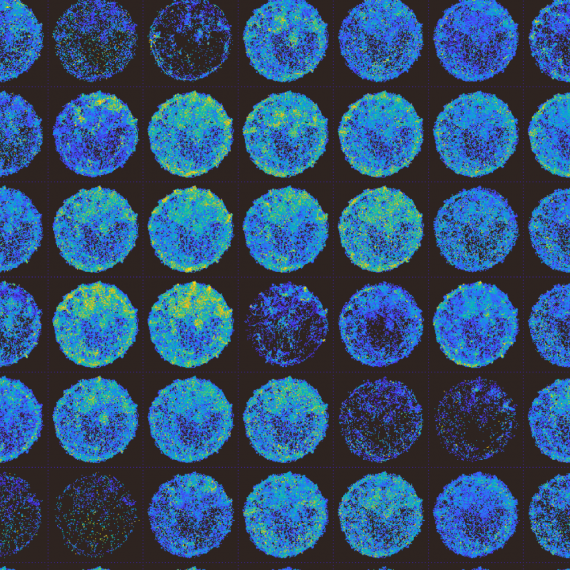McGovern Institute awards prize to neurogeneticist Cori Bargmann

The McGovern Institute for Brain Research at MIT announced today that Cornelia Bargmann of The Rockefeller University is the winner of the 2016 Edward M. Scolnick Prize in Neuroscience. The Prize is awarded annually by the McGovern Institute to recognize outstanding advances in any field of neuroscience. Bargmann is recognized for her work on the genetic and neural mechanisms that control behavior in the nematode Caenorhabditis elegans.
Bargmann is currently the Torsten N. Wiesel Professor at The Rockefeller University and an investigator of the Howard Hughes Medical Institute. She was a faculty member at University of California, San Francisco for 13 years before moving to Rockefeller in 2004.
Bargmann received her Ph.D. from MIT, where she studied with Robert Weinberg, making important contributions to cancer biology including the identification of the HER2/neu oncogene that is now an important target for the treatment of breast cancer. For her postdoctoral studies, she joined the MIT laboratory of H. Robert Horvitz, now a McGovern investigator, where she began to study the nervous system of the microscopic nematode worm C. elegans. With just 302 neurons, whose connections are known, C. elegans is ideally suited for understanding the genetic and neural mechanisms that control behavior, with a level of precision not possible in more complex organisms. At MIT, Bargmann demonstrated that worms can sense volatile odors via specific chemosensory neurons, and she identified genes that affected the animals’ responses to specific odorants, setting the stage for a genetic analysis of chemosensory behavior that she subsequently pursued in her own lab at UCSF and The Rockefeller University.
Among Bargmann’s important early contributions was the demonstration in 1996 that the gene odr-10 encodes an odorant receptor (OR) that is specific for diacetyl, a volatile compound that gives butter its distinct smell and to which worms are strongly attracted. Although putative ORs had been identified in other species, it had proved difficult to identify specific ligands for individual receptors, and Bargmann’s discovery, the first example in any species, opened many new research directions. In one especially elegant experiment, she and her team were able to drive expression of odr-10 in another sensory neuron that normally responds to repulsive odors, causing the worms to avoid the previously attractive diacetyl. This experiment provides one of the most compelling demonstrations of the “labeled line” hypothesis, in which the response to a sensory stimulus is determined not by the inherent properties of the stimulus itself but by the identity of the neuronal connection that transmits the signal.
This work was followed by detailed studies of the mechanisms by which worms sense and respond flexibly to chemical cues in their environment, in which Bargmann and her colleagues traced the flow of information from sensory inputs to motor outputs through circuits of identified neurons. Bargmann also provided a clear demonstration of learning in worms, showing that animals exposed to pathogenic bacteria can learn to avoid odorants associated with the pathogen. Interestingly, this avoidance response is mediated by the neurotransmitter serotonin, which is also plays important role in mammalian nausea, suggesting an ancient conserved mechanism for conditioned food aversion.
Building on her olfaction work, Bargmann has also studied the neural basis of social behavior, which in worms is strongly regulated by chemical cues. In one set of papers, for example, she identified a single neuron that integrates information from multiple chemical cues including food, oxygen and pheromones, to control the expression of social behavior. Bargmann’s work has encompassed many other areas of neuroscience, and by combining behavioral analysis with genetic manipulations and laser ablation of individual identified cells, she has revealed the diverse genetic and cellular mechanisms through which a simple nervous system can produce a wide range of behaviors.
Bargmann has received many awards and honors for her work, including the Kavli Neuroscience Prize and the Breakthrough Prize for Life Sciences. She has been elected to both the American Academy of Arts and Sciences and the National Academy of Sciences, and she served as co-chair of the advisory committee for the NIH BRAIN initiative.
The McGovern Institute will award the Scolnick Prize to Dr. Bargmann on Wednesday March 30, 2016. At 4.00 pm she will deliver a lecture entitled “Genes, neurons, circuits and behavior: an integrated approach in a compact brain,” to be followed by a reception, at the McGovern Institute in the Brain and Cognitive Sciences Complex, 43 Vassar Street (building 46, room 3002) in Cambridge. The event is free and open to the public.
About the Edward M. Scolnick Prize in Neuroscience
The Scolnick Prize, awarded annually by the McGovern Institute, is named in honor of Dr. Edward M. Scolnick, who stepped down as President of Merck Research Laboratories in December 2002 after holding Merck’s top research post for 17 years. Dr. Scolnick is now a core member of the Broad Institute, where he is chief scientist at the Stanley Center for Psychiatric Research. He also serves as a member of the McGovern Institute’s governing board. The prize, which is endowed through a gift from Merck to the McGovern Institute, consists of a $125,000 award, plus an inscribed gift. Previous winners are Charles Gilbert (The Rockefeller University), Huda Zoghbi (Baylor College of Medicine), Thomas Jessell (Columbia University), Roger Nicoll (University of California, San Francisco), Bruce McEwen (The Rockefeller University), Lily and Yuh-Nung Jan (University of California, San Francisco), Jeremy Nathans (Johns Hopkins University), Michael Davis (Emory University), David Julius (University of California, San Francisco), Michael Greenberg (Harvard Medical School), Judith Rapoport (National Institute of Mental Health) and Mark Konishi (California Institute of Technology).




